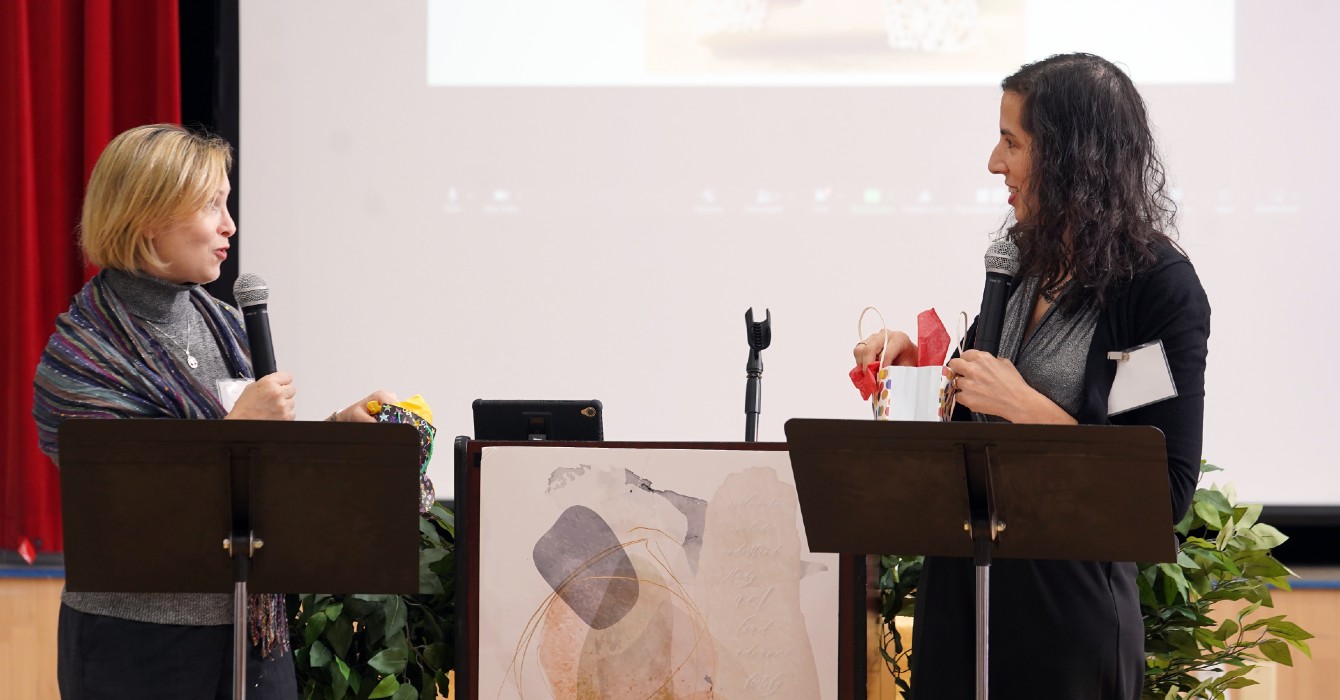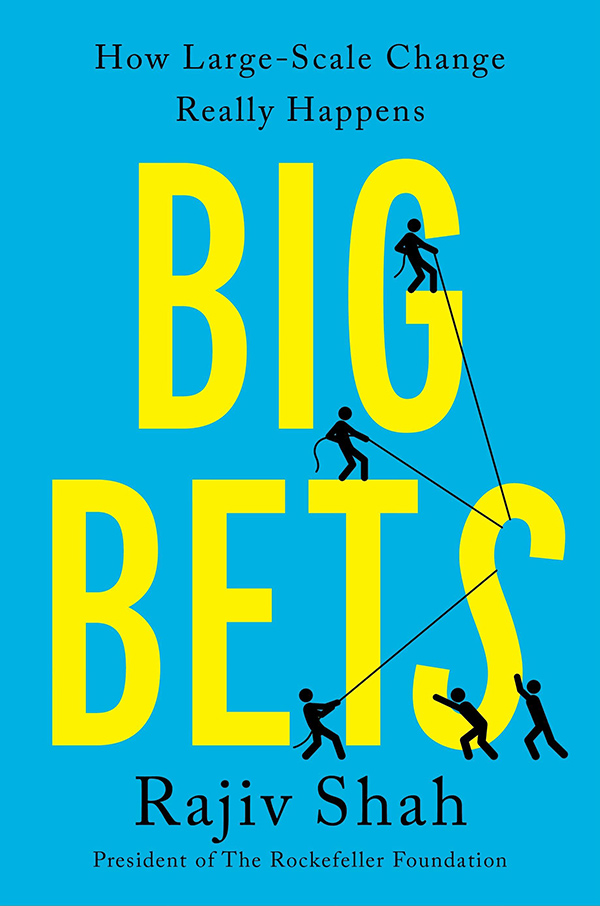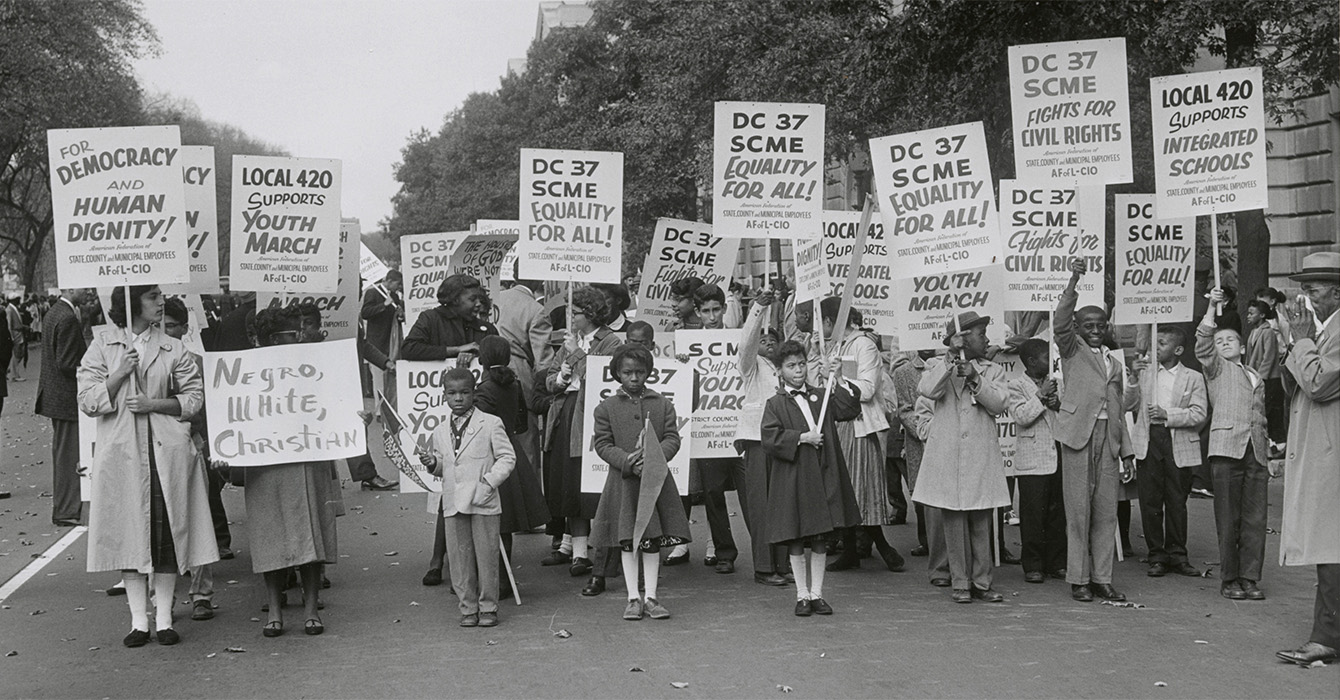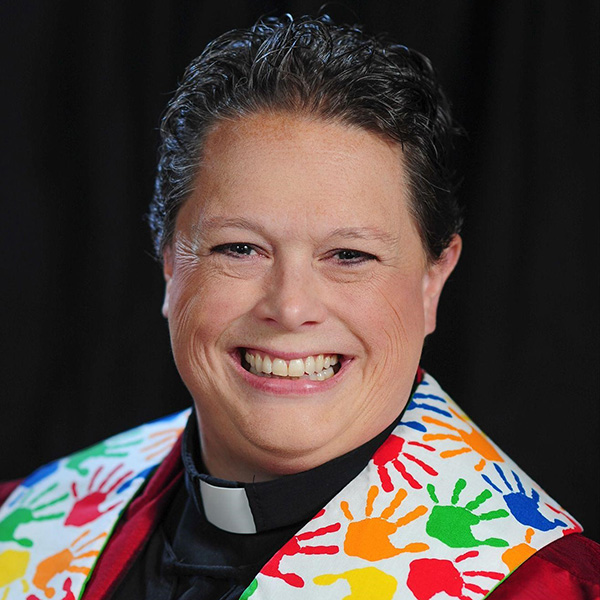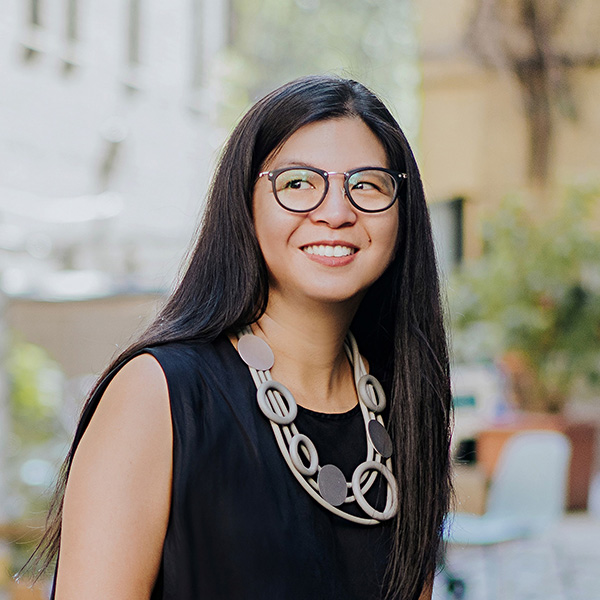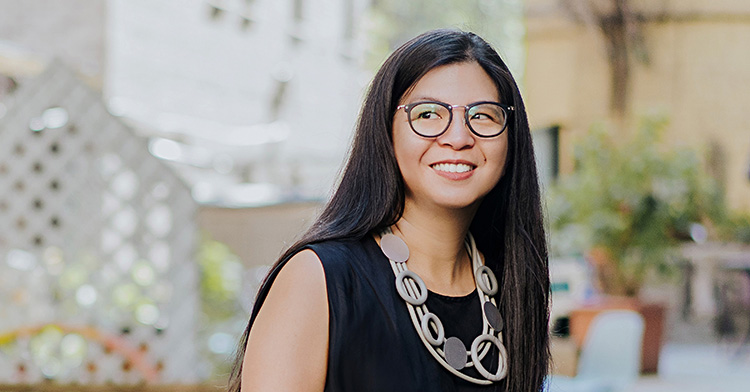Traditional Jewish institutions are facing many of the same issues that concern mainline Christian institutions -- declining participation among young people, increasingly outdated and expensive buildings, centralized institutional structures designed for a 1950s society.
How can and should the role of the rabbi adapt in this new environment? Duke law professor Barak Richman and Jewish innovator Daniel Libenson have tackled this question in a paper focused on rabbinic training.
In “Right-Skilling: Rabbis and the Rabbinic Role for a New Century,” Richman and Libenson, pointing to parallels between the U.S. health care system and American Jewry, argue for reforms in rabbinic training and Jewish institutional life.
Using changes in medicine as a model and drawing on Clayton Christensen’s theory of organizational innovation, they argue that there’s a need for “right-skilling” -- developing and employing professionals with the specific, targeted skills the sector needs.
Rather than training every Jewish clergyperson to fit the mold of the idealized family rabbi who has known every family in the congregation for decades, they argue for employing a decentralized model, in which a team of leaders trained in different specialties work together to facilitate Jewish learning and community.
“You do not need the brain surgeon, because most of your health needs do not involve brain surgery. You might need a nurse practitioner,” Richman said. “We don’t really need someone who is thoroughly versed in Talmud and hermeneutics or homiletics -- it may be actually what we really need is the camp counselor.”
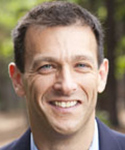 Richman is the Edgar P. and Elizabeth C. Bartlett Professor of Law and Business Administration at Duke University and specializes in the economics of contracting, new institutional economics, antitrust and health care policy. He also has written about Jewish issues, including raising questions of whether the Conservative movement’s rabbinic search practices violate antitrust laws.
Richman is the Edgar P. and Elizabeth C. Bartlett Professor of Law and Business Administration at Duke University and specializes in the economics of contracting, new institutional economics, antitrust and health care policy. He also has written about Jewish issues, including raising questions of whether the Conservative movement’s rabbinic search practices violate antitrust laws.
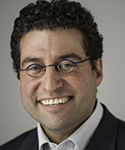 Libenson is the founder and president of the Institute for the Next Jewish Future, which aims to foster new ideas and approaches to Jewish living. Before that, he served as executive director of the University of Chicago Hillel and as director of new initiatives at Harvard Hillel.
Libenson is the founder and president of the Institute for the Next Jewish Future, which aims to foster new ideas and approaches to Jewish living. Before that, he served as executive director of the University of Chicago Hillel and as director of new initiatives at Harvard Hillel.
Richman and Libenson spoke to Faith & Leadership about their proposals for innovation in rabbinic education and Jewish institutions. The following is an edited transcript.
Q: In your paper, you compare rabbinic education and medical education. What did you find fruitful in that comparison as you contemplated this issue?
Libenson: Medicine is an area that has been particularly impacted by the information revolution, some of the same forces that we think are affecting religion.
What we wanted to explore was the question of whether and how the struggles that the medical profession has been facing are similar to those that religion has been facing, and then whether some of the solutions that seem to be popping up in medicine a little bit more quickly could be relevant to religion as well.
Richman: The role of professionals and the power structure within the institutions are fairly similar also. In hospitals, the organization is mobilized around physicians. Physicians are the power center.
Q: You identify the key issue in rabbinic education as a mismatch between the way rabbis are educated and the needs of the communities they’re being trained to serve.
Libenson: Rabbinical training includes a lot of elements that are actually not especially relevant to the day-to-day work of a rabbi. And they’re not learning a lot of things that they ought to be learning.
The expectation now is that a rabbi is a generalist and that the training should involve all of the elements that a rabbi in principle might be called upon to use. As a result, when you graduate, you don’t have enough skills in any particular area to actually do the job all that well. So you need additional training, which is often acquired on the job.
Some of the struggles in terms of changing that [mismatch] come from the fact that it’s already a very long training program. I think psychologically it’s hard to remove parts of the curriculum. There’s pressure from the field to say, “You can’t reduce the number of hours spent studying Talmud” or, “You can’t reduce the number of hours studying homiletics,” even if you’re talking about somebody who, when they go out into the community, is never going to give a sermon in their entire career.
That was part of why we’re suggesting to have some kind of specialization, or “right-skilling.”
Richman: We are training people for jobs that are in decline, and we’re not training people for jobs that are on the rise.
Rabbinical training is traditional. Mostly, it’s training pulpit rabbis, and if you just look at the job market, the number of pulpit rabbi openings is shrinking and the number of other opportunities is growing, like working at senior centers, being camp counselors, other sorts of pastoral duties.
Q: What are the needs of the community?
Libenson: People are looking for what they call “traditions.” They’re proud to be Jewish. They feel good about being Jewish. But they’re highly unengaged in existing organizations like synagogues.
I think what they’re looking for is somebody who is able to help them learn to do Jewish traditions in a way that they perceive as authentic or meaningful but not necessarily tied to some preconceived notion of the “right way” that our kind of Jewish community does it.
One of the interesting discoveries that’s kind of surprising is what Chabad rabbis -- who are ultra-Orthodox -- are trained to do. Their theology is such that they believe that every Jewish thing somebody does is itself valuable. Therefore, they really reinforce for people a sense of accomplishment and good feelings, no matter what they do.
Chabad rabbis’ training is much, much shorter than Reform or Conservative or even Modern Orthodox rabbinical training. It’s an example of some of the right-skilling that we’re talking about.
Q: In your paper’s conclusion, you talk about envisioning “a system of professionals that works together, rather than as figureheads atop discrete communities.” How does this fit in with the idea of right-skilling?
Richman: Right-skilling involves three separate ideas. No. 1 is that the kinds of needs the people have and the kinds of skills that would be really useful are multifaceted, and it would be ineffective to rely on one person to supply them.
The second idea is that right-skilling is often associated with de-skilling. You do not need the brain surgeon, because most of your health needs do not involve brain surgery. You might need a nurse practitioner.
We don’t really need someone who is thoroughly versed in Talmud and hermeneutics or homiletics -- it may be actually what we really need is the camp counselor.
The third idea is diversity. Having an individual at the pinnacle [of leadership] presupposes a homogeneous congregation. It presupposes that we all come to pray at the same time and the same place. That certainly isn’t true now. The whole millennial world is organized very differently from, say, the world of the 1950s. We shouldn’t expect a Judaism where everyone shows up at the same time at the same place and does the same thing.
We need a diversity of institutions, we need a diversity of professionals and skills, and we also necessarily need it decentralized.
Q: When you suggest that the role might be similar to that of a camp counselor, it might sound as though you are denigrating it as trivial. But camp plays an important part in Jewish education.
Richman: All sorts of camps and retreats -- and especially overnight camps -- have played a very, very significant role in the American Jewish experience for the last 100 years or so.
Many people would say that summer overnight camp has been their most formative Jewish experience. There is [now] some reckoning, even in the big institutions, recognizing that the synagogue is not succeeding in the same way that summer camps are.
The kinds of things the camp counselor does are often very supportive and constituent of creating a community, both in the summer in the mountains but also on your typical Sunday afternoon.
Libenson: I think that the question about right-skilling becomes a question of different levels of training. To take Barak’s analogy as an example, nobody imagines that it would be better if a camp counselor had five years of rabbinical training.
Using a patient management analogy, perhaps there would be some mechanism in the Jewish community that would help people figure out what kind of Judaism they’re actually looking for and that would be able to direct them to the professionals and other resources.
Today, somebody interested in Judaism assumes they should walk into their closest synagogue. Then they’re -- by definition -- being shuttled into a particular point of view of what Judaism is. They may not even realize that that’s happening. Often, they’re not happy, and they just assume that that means Judaism isn’t for them.
Q: One thing you note as a factor in your paper is that American Jews want to be Jewish but they aren’t necessarily religious. How can you be Jewish and not religious?
Libenson: That question has ancient roots. Daniel Boyarin at Berkeley talks about the idea that Judaism as a religion has only been accepted by Jews in the modern era. The notion that Judaism was a religion was actually something that was constructed by Christian thinkers.
Judaism understood itself to be the folkways and lifeways of the Jewish people, and religion was part of that, but only one part of it -- and not necessarily even the most important part.
I think that Jews have internalized that notion that religion is only one part of Judaism and that if you don’t accept the religion, then you can still be Jewish and just as much a Jew as somebody who is very religious.
In fact, a study of American Jews that was undertaken by the Pew Research Center in 2013 found that 32 percent of millennials say they have no religion but also identify as Jewish.
How does that translate for Christians? I think of something like a Christmas tree. People might say, “I’m not Christian, because I don’t believe in Jesus and I don’t accept the various tenets of Christianity. But I grew up Christian, and I still want to celebrate Christmas and have a Christmas tree.” They’re kind of experiencing Christianity as something other than a religion.
I think what people are looking for is a way to experience these Jewish traditions or folkways or culture or wisdom in a profound way but not necessarily in a religious way.
Q: And part of your argument is that that is not “less than.”
Libenson: Right. The training of rabbis and the role of rabbis in modern America has actually modeled itself consciously and unconsciously on the training of Christian pastors, Protestant pastors in particular, and has really positioned the role of rabbi as a religious leader, as a clergyperson, which was not actually the traditional understanding of what a rabbi was.
American Jews of our times are looking for somebody to help them learn [Jewish traditions], but that person doesn’t necessarily have to be a rabbi -- and in fact wouldn’t have been a rabbi throughout much of Jewish history.
So there’s a role in the Jewish world today that I think is very much needed -- somebody who would be the leader, instructor, convener of Jewish activity that is not religious in nature.
Q: In your model, are individuals on their own or is there also a congregation or community?
Richman: The gathering element is critical. The congregation, the community, is critical, certainly, to our notion of Judaism, and I think it’s critical to the religious experience.
What is very different, though, is it would probably be better not to have the gathering always in one central, physical infrastructure. That acts as another analogy with the health system, where our health system finds the multispecialty hospital at the epicenter. It’s actually a really bad place to deliver medicine. It’s very impersonal. It has a huge overhead -- very costly, very inefficient. Lots of mistakes also.
In our notion, gathering can happen in a lot of different places, in places that often are much more accessible than the big synagogue. It’s a very democratizing approach to encouraging the formation of communities where there is no locus of control, there is no epicenter.
Libenson: This question is also the genesis of our idea of a rabbinic practice group where you would have multiple kinds of rabbis working together as a team.
Something like that is harder to do in a small community with only one synagogue. But you could imagine a situation where multiple synagogues merged in some fashion and hired a team of specialists, as opposed to each one having a generalist.
Richman: I do think that digitally we are connecting with people in very different ways, and that has very significant implications not just for notions of community but also for the need to build expensive buildings.
But even taking digital technologies aside, our model for religious engagement by not relying on jack-of-all-trades professionals also opens up a much more participatory environment. I think this really is very much what millennials will want. They will not want to sit in a pew and be spoon-fed things. They want to be active.
You can imagine a Jewish community in a small place that is vibrant precisely because the roles that would traditionally be given to one rabbi instead are dispersed among the laity. It’s a community where there’s much more ownership over the individual roles, and that’s something that I think is almost a prerequisite to engaging millennials.








